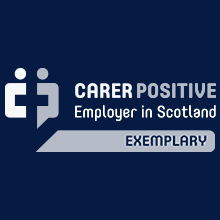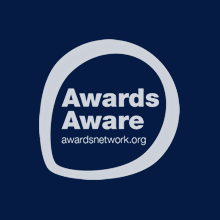Please also refer to Lymphadenopathy (Paediatric).
Neck lumps in children are very different from those in adults.
Squamous malignancy is not usually a factor in paediatric care and therefore guidelines for adults do not apply.
The overwhelming majority of paediatric neck swellings are benign lymphadenopathy.
Children, particularly up to early school age, virtually always have some cervical lymphadenopathy, usually due to intercurrent systemic viral or local infection. It is generally less common in older/ teenage children.
Pathology to consider
- Acute neck swelling in a toxic child indicates lymphadenitis
- A chronic neck swelling with a blue/purple tinge in a well child probably represents atypical microbacterial infection and is managed expectantly, very occasionally with triple antibiotic therapy by the medical or infectious diseases team – please refer.
- Lymphadenitis in conjunction with recent travel to at risk countries could point to TB
- Anterior midline neck swellings include lymph nodes and thyroglossal duct cysts
- Lymphoma/Leukemia: lymphoma is extremely rare in young children.
Consideration of RED FLAGS IS KEY:
- Unexplained weight loss
- Drenching night sweats
- Persistent unexplained lethargy / malaise
- Supraclavicular or axillary nodes
- Hepato- or splenomegaly
- Pallor or bruising
- Rapidly enlarging nodes or lump without obvious underlying cause/infection
- Persistent unexplained bone pain
- Unexplained bruising, petechiae or unusual bleeding
- Persistent unexplained fever, particularly in a child that has been travelling, especially in Asia or Eastern Europe.
- Contact with others with TB / Hep B / HIV
- Shortness of breath (in the absence of acute wheeze/asthma history)
- Size Matters: over 3 cm is suspicious.
C.M. & G.T. 21-01-25
Who to refer:
CONSIDER RED FLAGS (see above).
Refer URGENTLY to haemato-oncology (consider urgent discussion with on call team):
- Lymph node(s) persistent for more than 6 weeks and > 2 cms in size
- Lymph node(s) in an unusual site e.g. supraclavicular or axillary
- Lymph nodes which are (rapidly) increasing in size (without acute infection)
- Presence of any red flag symptoms.
Refer URGENTLY to medical paediatrics/Infectious Diseases (consider urgent discussion with on call team):
- Significant acute infected lymph node – usually antibiotic treatment indicated
- If infection (TB, HIV etc) suspected.
Refer to ENT:
If anterior lesion and unsure of pathology e.g. thyroglossal duct cyst, branchial anomalies etc, ENT would usually suggest USS before review to aid diagnosis.
Size Matters: over 3 cm is suspicious
Who NOT to refer:
- Children with persistent small pea sized (< 2 cm) lymph nodes, especially if infection is ongoing (e.g. large tonsils, dental abscess, eczema or scalp dermatitis) in the absence of red flag symptoms.
- Chronic, stable lymph node without Red Flags
- Reactive lymphadenopathy is common and normal. Small lymph nodes may persist indefinitely following viral illness and are not a cause for clinical concern, please reassure parents accordingly.
Size Matters: over 3 cm is suspicious.
Consideration of RED FLAGS IS KEY:
- Unexplained weight loss
- Drenching night sweats
- Persistent unexplained lethargy / malaise
- Supraclavicular or axillary nodes
- Hepato- or splenomegaly
- Pallor or bruising
- Rapidly enlarging without obvious underlying cause/infection
- Persistent unexplained bone pain
- Unexplained bruising, petechiae or unusual bleeding
- Persistent unexplained fever, particularly a child that has been travelling, especially in Asia or Eastern Europe.
- Contact with others with TB / Hep B / HIV
- Shortness of breath (in the absence of acute wheeze/asthma history)
- Size Matters: over 3 cm is suspicious.
Assessment
Underlying pathology, including:
- URTI/intercurrent illness
- Eczema Ear infections
- Teething/dental hygiene
Size
- Preferably measured
- Lymph nodes under 2 or even 3 cm are normal
Number of LN
- Several enlarged lymph nodes are suspicious
Duration and fluctuation
- Lymph nodes do fluctuate with acute infections
- Long standing static lymph nodes are normal
- After acute infections lymph nodes can take months to regress to normal size and might never do
Position
- Supraclavicular fossa is suspicious
- Anterior neck lesions are more likely to represent other (benign) pathology
Associated symptoms
- Fevers, night sweats, generally unwell, “just not themselves” without any obvious cause is suspicious (see red flags)
Other lymph nodes
- Axilla, groin, etc
- If present and enlarged are suspicious.
Management
- Antibiotics if acute cervical lymphadenitis is suspected
- Consider need for bloods (FBC, U&E, LFTs, CRP, Viral serology – EBV, CMV, Toxoplasma, Cat scratch)
- Generalised lymphadenopathy and multiple/bilateral sub-centimetre lymph nodes in otherwise well children should not be referred to ENT or other tertiary services
- ALWAYS consider General Paediatric referral if red flags.













